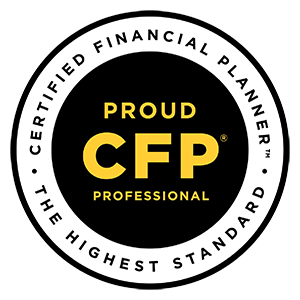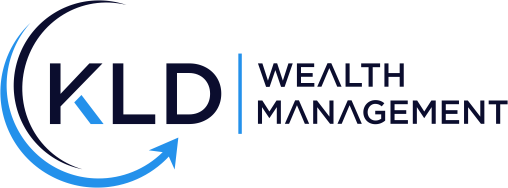Get in touch
Call or Text:
937-404-5180
Email:
dwiedmeyer@kldwealth.com
Roth Conversions and the Importance of Tax-Free Income in Retirement
As you approach retirement, one of the most strategic moves you can make is converting a portion of your traditional retirement savings to a Roth IRA. This isn’t just about shifting money between accounts; it's a calculated decision that can impact your tax situation and retirement lifestyle significantly. Let’s explore why Roth conversions are a crucial part of financial planning and how tax-free income in retirement can benefit you.
What Are Roth Conversions?
A Roth conversion involves moving money from a traditional retirement account, like a 401(k) or a traditional IRA, to a Roth IRA. The primary advantage of a Roth IRA is that while you pay taxes on the converted amount now, your future withdrawals are tax-free, provided you meet certain conditions. This means that during retirement, you can withdraw money without worrying about income taxes, which can be a significant advantage.
The Benefits of Tax-Free Income
- Predictable Tax Bills: With tax-free withdrawals from a Roth IRA, you avoid the uncertainty of fluctuating tax rates in the future. According to the Tax Policy Center, tax rates are expected to rise over time as the government addresses budget deficits and other fiscal challenges. Having a source of tax-free income can provide peace of mind and predictability in your retirement planning.
- Avoiding RMDs: Roth IRAs are not subject to Required Minimum Distributions (RMDs) during the account owner's lifetime, unlike traditional IRAs. This means you can let your investments grow without being forced to take withdrawals, which can be particularly advantageous if you want to leave a larger inheritance or if you don’t need the funds immediately.
- Enhanced Financial Flexibility: Tax-free withdrawals give you greater control over your taxable income, potentially allowing you to stay in a lower tax bracket. This can be useful if you have other income sources or if you want to manage your tax situation strategically. For example, in 2023, the top tax bracket in the U.S. is 37%—staying out of this bracket can save you a substantial amount in taxes.
- Long-Term Growth Potential: By converting to a Roth IRA, your investments can grow tax-free. Given that the S&P 500 has historically provided an average annual return of about 10%, tax-free growth can significantly boost your retirement savings over time.
How Personal Financial Planning Can Help
Proper personal financial planning is essential to making Roth conversions effective. Here’s how a well-structured plan can help you avoid pitfalls and maximize benefits:
- Timing Your Conversions: Determining the right time to convert is crucial. Converting when your income is lower can reduce the amount of taxes owed. For instance, if you’re in a lower tax bracket now than you anticipate being in retirement, it might make sense to convert more of your savings to a Roth IRA.
- Tax Bracket Management: Effective tax planning involves managing your income to avoid pushing yourself into a higher tax bracket. By strategically converting portions of your traditional IRA to a Roth IRA, you can manage your tax liability and avoid significant spikes in taxable income.
- Integrating with Overall Strategy: Roth conversions should be part of a comprehensive financial plan. This includes considering other strategies we’ve discussed, such as optimizing tax withholdings and leveraging tax-advantaged accounts to ensure that every aspect of your financial plan aligns with your goals.
In previous blog posts, we’ve explored the impact of tax refunds and how they might signal cash flow mismanagement. We also discussed 10 ways tax planning can maximize retirement savings and wealth building. Roth conversions are a critical piece of that puzzle, helping you manage tax implications effectively and secure a tax-efficient retirement.
Ready to take control of your retirement planning and optimize your tax strategy? Contact us today to schedule a consultation and learn how Roth conversions can fit into your financial plan. Let’s work together to build a tax-efficient strategy that enhances your retirement and ensures your financial security.





Phone
937-404-5180
706 Deerfield Rd.
Lebanon, OH 45036
Get financial wellness tips, directly to your inbox.
Contact Us
We will get back to you as soon as possible.
Please try again later.
All Rights Reserved | KLD Wealth | Privacy Policy | Form ADV
Advisory services offered through KLD Wealth Management, LLC, an investment adviser registered with the state(s) of Ohio. Advisory services are only offered to clients or prospective clients where KLD Wealth Management, LLC and its representatives are properly registered or exempt from registration.
The information on this site is not intended as tax, accounting or legal advice, nor is it an offer or solicitation to buy or sell, or as an endorsement of any company, security, fund, or other offering. Information provided should not be solely relied upon for decision making. Please consult your legal, tax, or accounting professional regarding your specific situation. Investments involve risk and have the potential for complete loss. It should not be assumed that any recommendations made will necessarily be profitable.
The information on this site is provided “AS IS” and without warranties either express or implied and the information may not be free from error. Your use of the information provided is at your sole risk.
